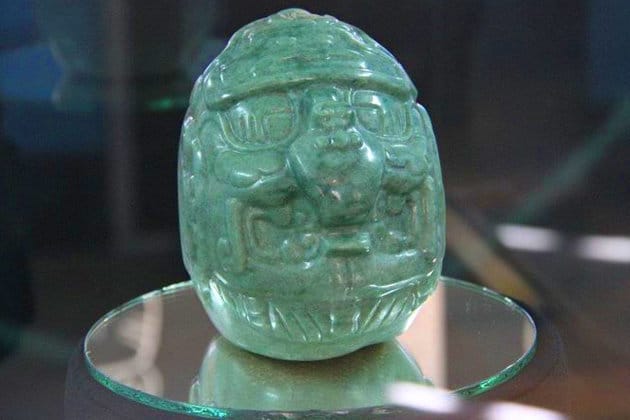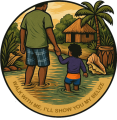The Motagua River Valley: Source of All Maya Jade
Walk with me to the green heart of Maya civilization — a valley in eastern Guatemala where stone was more valuable than gold.
💎 The Only Source of Maya Jade
For the ancient Maya, jade was not just a gemstone. It was breath, maize, rulership, and life itself. But all of it — every bead, mask, and pendant found from Mexico to Belize — came from one place: the Motagua River Valley in Guatemala.
Here, veins of jadeite ran through the mountains, exposed by the river’s force. The valley supplied both deep green jadeite and rare blue jade, fueling a trade network that stretched across the Maya world.
🚤 From Highlands to Lowlands: Jade on the Move
Trade into the Lowlands
- Rivers as highways → The Motagua and its tributaries carried jade down to the Gulf of Honduras, where canoes took over.
- Lowland cities → From coastal ports, jade moved inland to lowland centers like Altun Ha, Caracol, and Xunantunich.
- Coastal exchange → Belize’s cayes and lagoons became staging points where jade met salt, cacao, obsidian, and shell.

Why Belize Mattered
Belize was not just a recipient of jade. It was a gateway zone where inland and coastal trade converged. Jade arrived from the highlands, and in return, Belize offered:
- Marine resources → conch, shell, and fish.
- Salt → vital for preserving food.
- Exotic hardwoods → traded inland.
The Jade Head of Altun Ha is the clearest proof. A single elite burial held a piece of Motagua stone so massive it must have traveled through layers of exchange, alliance, and ceremony to reach Belize’s coast.
🛠️ How the Maya Worked Jade
Without metal tools, the Maya shaped jade with:
- Stone hammers to break rough blocks.
- Bone and wood tools for detail.
- Sand as an abrasive to polish surfaces until they gleamed.
It could take years to finish a single large carving. That effort turned jade into more than jewelry — it was sacred time made visible.
🌞 Symbol of Life and Power
Why was jade so precious to the Maya?
- Green = Maize and Breath → Jade symbolized the maize plant and the life-force carried in the breath.
- Durability = Eternity → Unlike other stones, jade did not break easily. It represented continuity and cosmic stability.
- Size = Status → The larger the jade, the higher the power of the person who wore it.
This is why Belize’s Jade Head and Wind Jewels are more than artifacts — they are cosmic statements carved in stone.
🏞️ The Motagua Valley Today
Today, the Motagua River still cuts through Guatemala, carrying the memory of this sacred stone. Modern miners sometimes still find jade, but for the Maya world, the valley was a fountain of life.
To visit Belize’s museums, ruins, or even hold a replica of the Jade Head is to touch something that began in Motagua — a valley that shaped civilization itself.
🌀 Closing Reflection
When we talk about jade in Belize, we’re really talking about the journey of stone across borders — from highland quarries to lowland cities, from Guatemala’s mountains to Belize’s coast.
The Motagua Valley reminds us that Belize’s treasures are not isolated. They are part of a living web of exchange, survival, and meaning. Every time you see jade in Belize, you are looking at a piece of Guatemala’s earth — carried by Maya hands into Belizean memory.

